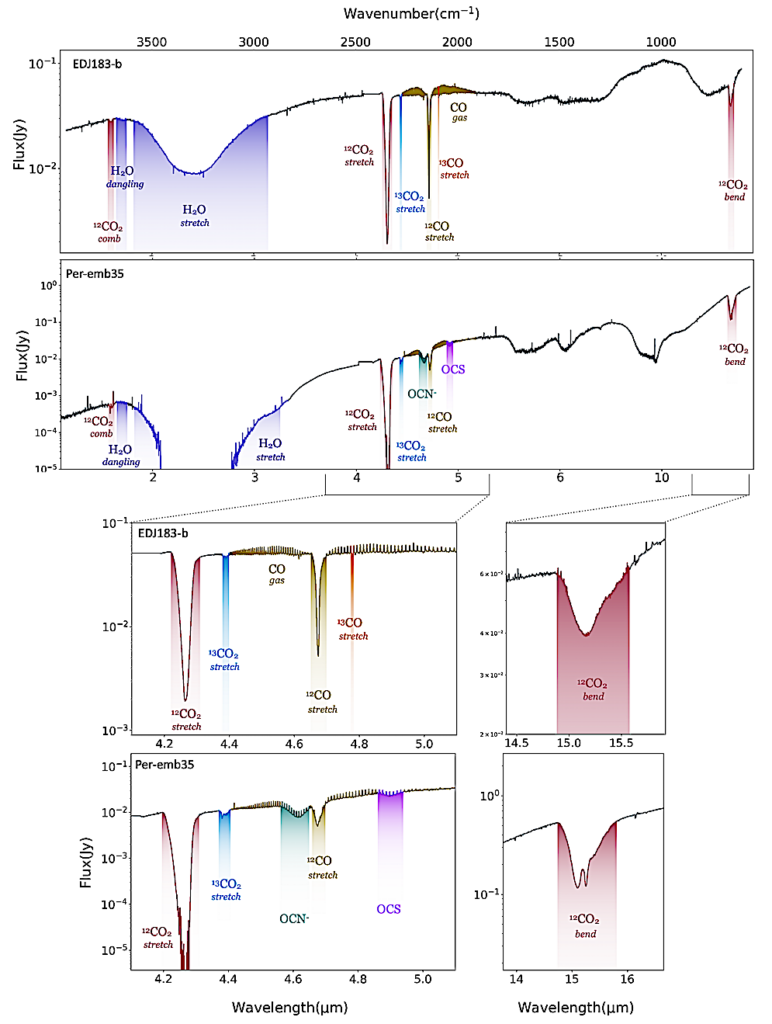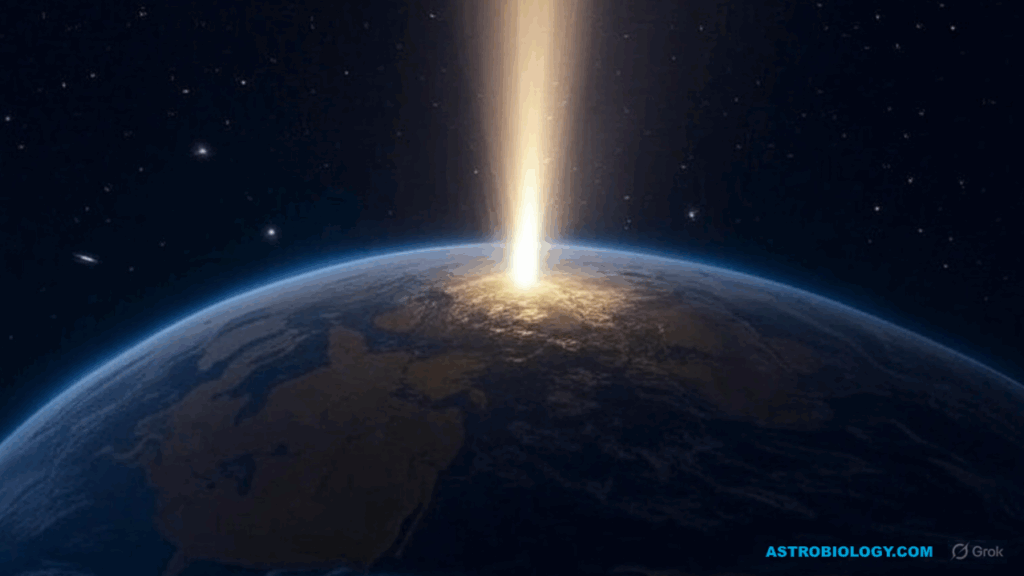JOYS+ Study Of Solid State 12C/13C Isotope Ratios In Protostellar Envelopes: Observations of CO and CO2 Ice with JWST

The carbon isotope ratio is a powerful tool for studying the evolution of stellar systems. Recent detections of CO isotopologues in disks and exoplanet atmospheres pointed towards significant fractionation in these systems.
In order to understand the evolution of this quantity, it is crucial to trace the isotope abundance from stellar nurseries to planetary systems. During the protostellar stage the multiple vibrational modes of CO2 and CO ice provide a unique opportunity to examine the carbon isotope ratio in the solid state.
Now with the sensitivity of the James Webb Space Telescope, these absorption features have become accessible at high S/N in Solar-mass systems. We quantify the 12CO2/13CO2 and the 12CO/13CO isotope ratios in 17 class 0/I low mass protostars from the 12CO2 combination modes (2.70 μm and 2.77 μm), the 12CO2 stretching mode (4.27 μm), the 13CO2 stretching mode (4.39 μm), the 12CO2 bending mode (15.2 μm), the 12CO stretching mode (4.67 μm) and the 13CO stretching mode (4.78 μm) using JWST observations. We also report a detection of the 12CO overtone mode at 2.35 μm.
The 12CO2/13CO2 ratios are in agreement and we find mean ratios of 85 ± 23, 76 ± 12 and 97 ± 17 for the 2.70 μm, 4.27 μm and the 15.2 μm bands, respectively. The main source of uncertainty stem from the error on the band strengths. The 12CO/13CO ratios derived from the 4.67 μm bands are consistent, albeit elevated with respect to the 12CO2/13CO2 ratios and we find a mean ratio of 165 ± 52.
These findings indicate that ices leave the pre-stellar stage with elevated carbon isotope ratios relative to the interstellar medium and that fractionation becomes significant during the later stages.

Full NIRSpec and MIRI spectra for EDJ183-b and Per-emb35. The the ice absorption features are shaded in color. The bottom panels show zoomed-in sections of the spectra. — astro-ph.SR
N. G. C. Brunken, E. F. van Dishoeck, K. Slavicinska, V. J. M. le Gouellec, W. R. M. Rocha, L. Francis, L. Tychoniec, M. L. van Gelder, M. G. Navarro, A. C. A. Boogert, P. J. Kavanagh, P. Nazari, T. Greene, M. E. Ressler, L. Majumdar
Subjects: Solar and Stellar Astrophysics (astro-ph.SR); Astrophysics of Galaxies (astro-ph.GA)
Cite as: arXiv:2409.17237 [astro-ph.SR] (or arXiv:2409.17237v1 [astro-ph.SR] for this version)
https://doi.org/10.48550/arXiv.2409.17237
Focus to learn more
Submission history
From: Nashanty Brunken
[v1] Wed, 25 Sep 2024 18:00:03 UTC (12,485 KB)
https://arxiv.org/abs/2409.17237
Astrobiology








